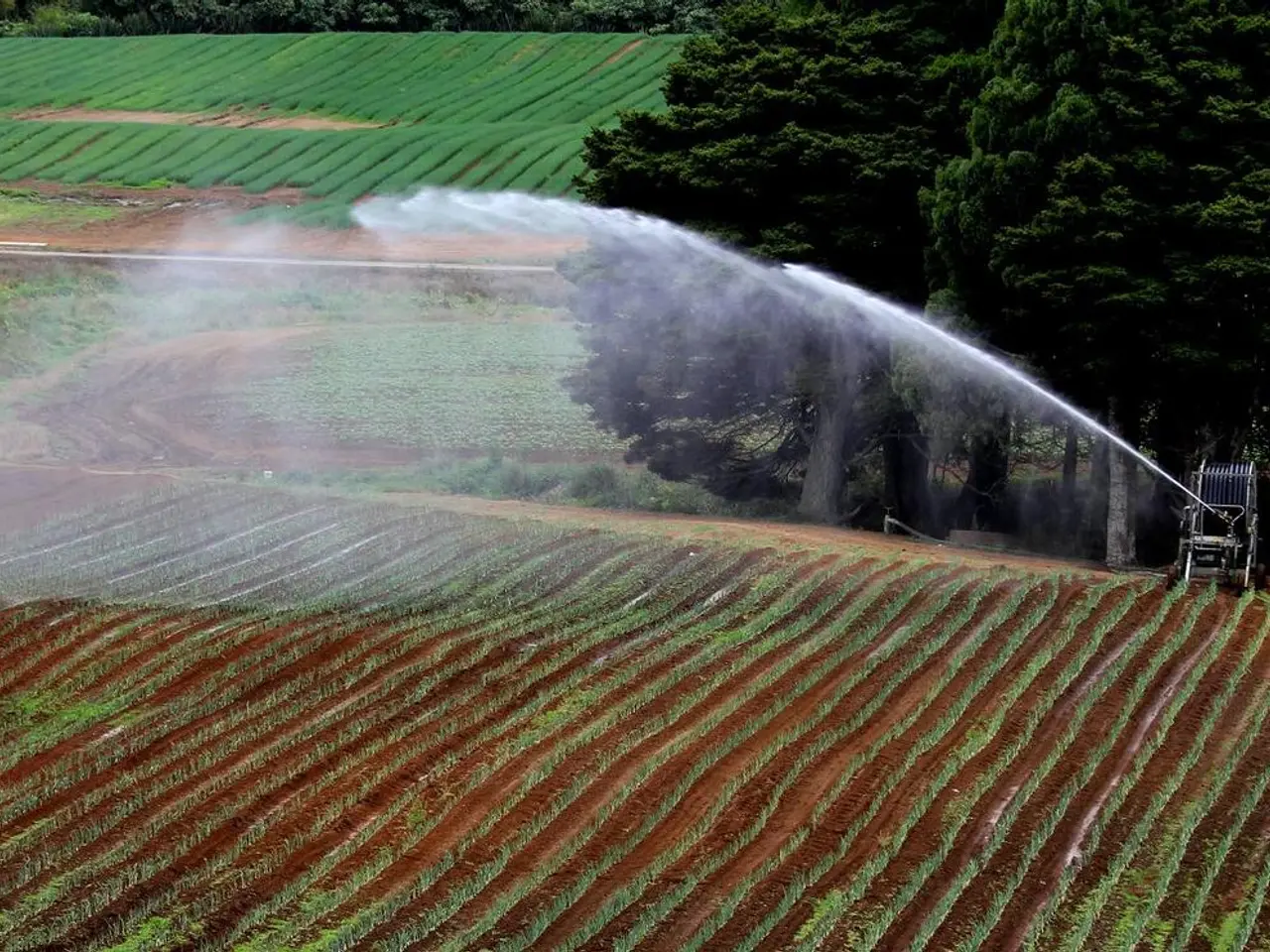Benefits and Drawbacks of Soil-Less Cultivation: Comprehensive Analysis
Hydroponic farming, a method of growing plants without soil, offers several long-term environmental advantages over traditional soil-based farming. However, it also presents some challenges, particularly regarding energy consumption.
Environmental Benefits of Hydroponics
Hydroponic systems are water-efficient, using up to 85-90% less water than conventional soil farming due to a closed system that recycles water rather than losing it to soil absorption and evaporation [1][2][3]. This water conservation is a significant advantage, especially in regions where water resources are scarce.
Hydroponics also consumes significantly less land, often growing crops vertically, thereby saving up to 70% or more land compared to conventional farming [1][3][4]. This reduction in land use helps to preserve natural habitats and decrease the risks of soil degradation.
Another environmental benefit of hydroponics is its reduced chemical use and pollution. Since hydroponics does not involve soil, it avoids soil nutrient depletion and contamination. It typically requires fewer insecticides and pesticides, thereby lessening chemical runoff into waterways and reducing environmental pollution [1][2][3].
Hydroponic farming also benefits from lower greenhouse gas emissions from logistics. Hydroponic and especially vertical farms can be located near urban centers, minimizing transportation distances. This localization cuts emissions associated with long food supply chains [4].
Moreover, hydroponics allows for year-round production and climate resilience. Indoor, controlled-environment hydroponics can operate irrespective of outdoor weather conditions, supporting stable food production and reducing pressures to convert land for agriculture [1][4].
Challenges in Hydroponics
Despite its advantages, hydroponic farming faces challenges primarily related to energy consumption. Hydroponic systems, particularly vertical farms, often rely heavily on electricity for lighting, climate control, and water circulation. Average energy needs may be around 38.8 kWh per kilogram of produce [4].
To mitigate this environmental cost, integration with renewable energy sources like solar and wind is crucial to making hydroponics more sustainable long term [2][4]. Dependence on technical knowledge, infrastructure, and stable energy supply can be limiting factors in some regions, suggesting that hydroponics is not a simple replacement but a complementary farming method [1][2].
Comparison with Traditional Soil-Based Farming
Compared to traditional soil-based farming, hydroponics has several long-term environmental impacts. Hydroponics reduces the need for pesticides and soil-related diseases, while traditional farming leads to greater water consumption and inefficiency, large land use, heavy use of fertilizers and pesticides, and emissions linked to mechanized farming and long food supply chains [2].
In Conclusion
Hydroponics farming presents clear long-term environmental benefits in resource conservation, reduced land use, and local production emissions compared to traditional soil-based agriculture. However, its sustainability depends significantly on managing energy consumption, preferably through renewable sources. It is most effectively viewed as a complementary, innovative farming method that can alleviate some environmental pressures inherent to conventional agriculture [1][2][3][4].
[1] FAO. (2015). Hydroponics and aquaponics: A review of the current state of knowledge. Food and Agriculture Organization of the United Nations.
[2] Peck, M. (2013). Hydroponics and the environment: A review of the potential impacts. Journal of Hydroponics and Greenhouse Production, 163(1), 8-17.
[3] Schwarz, H. P., & Dong, X. (2018). Hydroponic food production: Its potential for future food security and sustainability. Journal of Cleaner Production, 181, 641-651.
[4] Stolzy, A., & Schwarz, H. P. (2018). Hydroponics and urban agriculture: A review of the current state of the art and future perspectives. Urban Forestry & Urban Greening, 33, 1-11.
- Investigations in the field of science and technology have revealed that vertical farming, a type of hydroponic farming, can save up to 70% of land compared to traditional farming methods, thereby preserving natural habitats and decreasing the risks of soil degradation.
- The integration of hydroponic farming with health-and-wellness practices, such as year-round production and climate resilience, promotes stable food production and reduces pressures to convert land for agriculture.
- In the realm of environmental-science, hydroponic systems are found to be more water-efficient, using up to 85-90% less water than conventional soil farming, thus helping in significant water conservation in regions where water resources are scarce.
- Fitness-and-exercise enthusiasts and nutrition experts can appreciate the benefits that technology brings to hydroponics, as it allows for the controlled growing conditions necessary to produce fresh, nutrient-rich produce, thereby promoting a healthy lifestyle.




